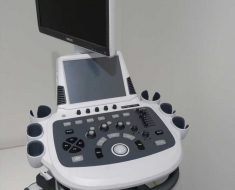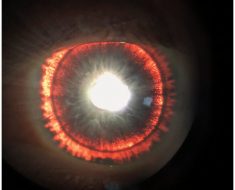TOPLINE:
More than 1 in 5 patch-tested patients reacted to at least one of a family of preservatives used in personal care products and household cleaners, providing evidence that isothiazolinone sensitivity appears to be common in North America, researchers report.
METHODOLOGY:
-
Isothiazolinones, a group of heterocyclic sulfur-containing compounds that include methylisothiazolinone (MI), methylchloroisothiazolinone (MCI), benzisothiazolinone (BIT), and octylisothiazolinone (OIT), have been used as preservatives in personal care products and household cleaners and are known to cause allergic contact dermatitis.
-
In Canada, use of MCI/MI and MI is prohibited in leave-on products and restricted in rinse-off products. The US has recommendations to limit isothiazolinones, but no formal legislation to restrict these substances.
-
In a retrospective, cross-sectional study, researchers analyzed data from 9028 patients in the North American Contact Dermatitis Group database who were patch tested between 2017 and 2020 to MI 0.2% aq., MCI/MI 0.02% aq., BIT 0.1% pet., and/or OIT 0.025% pet.
-
They analyzed positive patch-test prevalence, co-reactivity among isothiazolinones, and traits of allergic populations.
TAKEAWAY:
-
In all, 21.9% of participants had a positive reaction to at least one isothiazolinone. Overall positivity was 14.4% for MI, 10.0% for MCI/MI, 8.6% for BIT, and 0.5% for OIT.
-
Isothiazolinone-allergic participants were more likely than nonallergic participants to have occupational skin disease (16.5% vs 10.3%; P < .001), have primary hand dermatitis (30.2% vs 19.7%; P < .001), and be older than 40 years (73.1% vs 61.9%; P < .001).
-
Among isothiazolinone-allergic patients, 44.1% tested positive to multiple isothiazolinones.
-
In total, 47.3% of patients who tested positive to MI, 60.1% of those who tested positive for BIT, and 40.8% who tested positive for OIT did not react to MCI/MI.
IN PRACTICE:
“Patients should be patch tested to isothiazolinones beyond just MCI/MI to determine sensitivity to each allergen,” the authors write.
SOURCE:
The study, by lead author Margo J. Reeder, MD, of the University of Wisconsin School of Medicine and Public Health, Madison, and colleagues was published online October 22, 2023, in the Journal of the American Academy of Dermatology.
LIMITATIONS:
The retrospective cross-sectional study design precludes long-term follow-up. With only one allergen source recorded for some, the data may incompletely capture allergies to other isothiazolinones. Participants were referred for patch testing, so their results may not be generalizable to the general population.
DISCLOSURES:
The study received no funding. Reeder and several coauthors report financial relationships with various pharmaceutical companies. Reeder and one coauthor report financial relationships with a medical publisher. The remaining coauthors report no relevant financial relationships.
Source: Read Full Article





